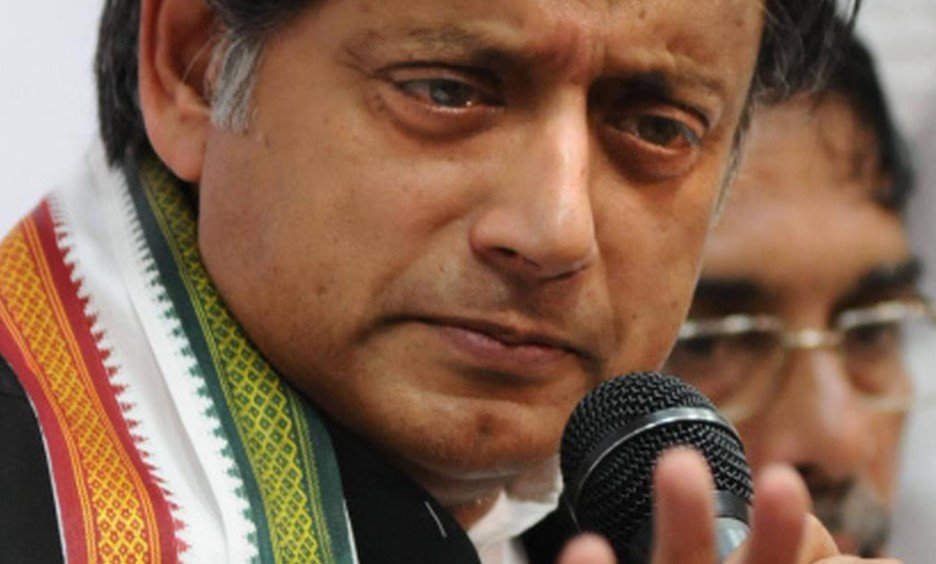In a candid interaction at Washington DC’s National Press Club, Congress leader Shashi Tharoor offered a vivid explanation of why India named its recent counter-terrorism drive “Operation Sindoor.” Speaking to an attentive audience, Tharoor described the symbolism behind the choice — connecting the color of sindoor, a traditional red mark worn by married Hindu women, to the blood spilled by terrorists, making the operation’s name deeply poignant and resonant.
A Name Rich in Cultural Meaning and Emotional Weight
Shashi Tharoor, leading an all-party delegation on a diplomatic outreach in the US, emphasized that “Operation Sindoor” was not chosen lightly. To many outside India, sindoor might be just a decorative mark. But for millions of Indian women, it represents marriage, commitment, and a sacred bond. “It’s a vermilion mark applied to the forehead, usually at the center parting of the hair, right at the moment of marriage,” Tharoor explained. “Women wear it every day thereafter as a symbol of their marital status.”
The red hue of sindoor, he noted, is remarkably close to the color of blood. This connection isn’t just a poetic coincidence. Tharoor invoked the Hindi phrase “khoon ka badla khoon,” which means “blood for blood.” He twisted it to say that in this case, “it was sindoor ka badla khoon”— blood in response to what the terrorists have done to the sanctity and safety represented by sindoor. It was a way to underline the gravity of the attack and the fierce response that followed.
This nuanced explanation made it clear that the operation’s name carried deep cultural and emotional symbolism. It wasn’t just a code name but a statement — a reminder of the personal and societal wounds caused by terror.

Diplomatic Push in Washington and Beyond
The all-party delegation, spearheaded by Tharoor, met members of the India Caucus in the US House of Representatives. Bipartisan co-chairs Ro Khanna and Marc Veasey, along with vice co-chairs Andy Barr and Marc Veasey, joined the talks. The discussions were part of a broader diplomatic outreach, aiming to build international awareness and support for India’s stand against terrorism.
The visit to Washington was a strategic move. The delegation sought to strengthen India-US relations and highlight the complexities India faces with terrorism. Tharoor and his colleagues aimed to share India’s narrative directly with influential lawmakers and key opinion leaders in the US.
During his interaction, Tharoor also stressed the importance of global solidarity. He mentioned that while the world condemns terrorism, it is essential to understand the specific challenges India faces, especially with cross-border terrorism.
The Cultural Depth of Sindoor and Its Significance
Many Americans and foreigners may not be familiar with the practice of sindoor, so Tharoor’s explanation served a dual purpose. It clarified the symbolism and also bridged a cultural gap, allowing international audiences to connect more deeply with India’s message.
Sindoor is more than just a cosmetic application. For married Hindu women, it’s a daily emblem of their marital vows. Its bright red color stands out vividly, much like the resolve of those affected by violence and terror.
Tharoor’s choice to highlight this traditional practice shows a thoughtful diplomatic approach—inviting empathy through cultural storytelling rather than mere political statements.
Challenges in India’s Counter-Terror Diplomacy
Tharoor’s remarks also hinted at the larger challenges India faces in fighting terrorism on multiple fronts, including the difficult dialogue with Pakistan. He has previously spoken about the complications in engaging with Pakistan when terror remains a looming threat.
This diplomatic visit, with the symbolic “Operation Sindoor” front and center, sends a message: India is ready to defend its citizens fiercely and with cultural pride. It also underscores that India is seeking support and understanding from the global community for its actions.
The Message Behind the Blood and Vermilion
The phrase “sindoor ka badla khoon” resonates far beyond poetic imagery. It carries a raw emotion of loss, resilience, and justice. By choosing a name tied closely to the intimate fabric of Indian social and cultural life, the government has infused the operation with a personal edge.
It tells the story of lives affected, families broken, and the country’s vow to retaliate in kind. The red of the sindoor is not just a color; it’s a symbol of life, love, and sacrifice. The red of blood is a stark reminder of the cost of violence and the price of peace.
In Washington, far from India’s borders, this symbolism gave lawmakers and observers a glimpse into why India feels compelled to take strong action. It’s not just politics — it’s deeply human.
